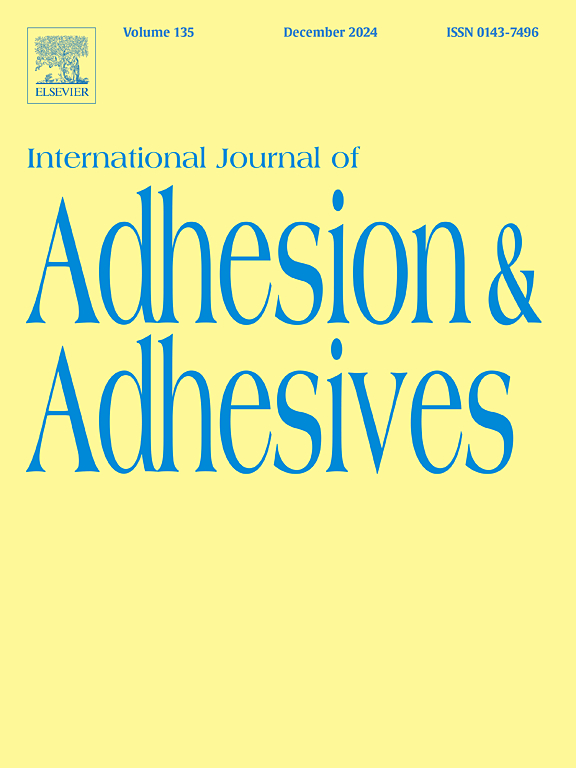JIS粘接强度的几何依赖性表示为平均应力和基于ISSF的对策
IF 3.2
3区 材料科学
Q2 ENGINEERING, CHEMICAL
International Journal of Adhesion and Adhesives
Pub Date : 2025-02-14
DOI:10.1016/j.ijadhadh.2025.103978
引用次数: 0
摘要
日本工业标准(JIS)规定粘合强度为平均极限拉伸应力,不考虑尺寸效应。规定JIS试样粘接面积较小,AJIS=(12.7mm)2。因此,本文研究了大粘接面积A ~ AJIS时平均粘接强度的降低。本文的讨论基于前人的研究结果,即粘接强度可以表示为恒定的ISSF (Intensity of The Singular Stress Field)。即使对于韧性树脂,也证实了粘接层的弹性行为,以及小尺度屈服,证明了弹性分析所得的ISSF的有效性。数值模拟表明,平均粘接强度随粘接几何形状的不同而变化。当黏合剂的几何形状增加十倍时,黏合剂的强度降低到JIS强度的50%;当黏合剂的几何形状增加一百倍时,黏合剂的强度降低到JIS强度的20%。对于较大的粘接区域,可采用与JIS规定的小粘接区域相同的粘接厚度来施加JIS强度。这是因为实际产品的ISSF是由胶粘剂厚度控制的,而与胶粘剂面积无关。本文章由计算机程序翻译,如有差异,请以英文原文为准。
Adhesive geometry dependence of JIS adhesive strength expressed as average stress and countermeasure based on ISSF
The Japanese Industrial Standard (JIS) specifies the adhesive strength as an average ultimate tensile stress without considering the size effect. The prescribed JIS specimen has a smaller adhesive area, . In this paper, therefore, the reduction of the average adhesive strength is investigated for large adhesive areas . The discussion is based on the results that the adhesive strength can be expressed as a constant ISSF (Intensity of the Singular Stress Field), as shown in previous studies. Even for ductile resin, the elastic behavior of the adhesive layer is confirmed, as well as small-scale yielding, showing the validity of the ISSF obtained by elastic analysis. Numerical simulation shows that the average adhesive strength varies depending on the adhesive geometry. With a tenfold increase in the adhesive geometry, the adhesive strength decreases to 50 % of the JIS strength, and with a hundredfold increase, the adhesive strength decreases to 20 % of the JIS strength. For large adhesive areas, the JIS strength can be applied by using the same adhesive thickness as that for the small adhesive area specified by the JIS. This is because the ISSF of the actual product is controlled by the adhesive thickness regardless of the adhesive area.
求助全文
通过发布文献求助,成功后即可免费获取论文全文。
去求助
来源期刊

International Journal of Adhesion and Adhesives
工程技术-材料科学:综合
CiteScore
6.90
自引率
8.80%
发文量
200
审稿时长
8.3 months
期刊介绍:
The International Journal of Adhesion and Adhesives draws together the many aspects of the science and technology of adhesive materials, from fundamental research and development work to industrial applications. Subject areas covered include: interfacial interactions, surface chemistry, methods of testing, accumulation of test data on physical and mechanical properties, environmental effects, new adhesive materials, sealants, design of bonded joints, and manufacturing technology.
 求助内容:
求助内容: 应助结果提醒方式:
应助结果提醒方式:


